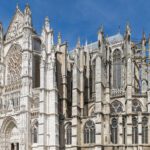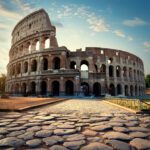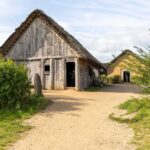Follow in the path of merchants, traders, and warriors at China’s Mogao Caves.
Caves carved into the cliffs filled with brightly painted murals are some of western China’s best kept secrets. Located in the arid climate of the Gobi Desert, the Mogao Caves have preserved thousands of sculptures and paintings of Buddha for over 1500 years. Myth has it that the first of the grottos was created by a monk named Lejun. When passing along the Silk Road, he saw a mountain that gleamed with reflected rays from the sun that looked like a manifestation of thousands of Buddhas. He declared it the holy land of the Buddhists and with the help of local craftsmen dug the first deep hollow in the steep cliff and adorned it with colorful paintings. When the news spread, more and more believers did the same.
There are a total of 735 caves many containing murals of the life of Buddha, picturesque and finely-painted landscapes, pavilions as well as scenes of ancient Chinese people’s work and life. These scenes depict the folklore and historical changes of over 1,500 years of Chinese history. In 1900, the cave of Buddhist scriptures was discovered and Mogao Caves came to the world’s attention.
The Caves of Dunhuang, authored by Fan Jinshi, Director of the Dunhuang Academy has recently been published by Scala. The book provides a detailed description of 50 caves at Mogao and other sites near Dunhuang.
Join Far Horizons on China’s Silk Road, and enjoy specially-arranged openings of caves closed to the public and lunch hosted by the staff of the Dunhuang Academy.


